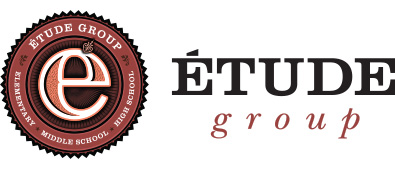by: Susan Griffiths
ReBlog:Why Kids Need to Move, Touch, and Experience to Learn
This blog is part of a series titled ReBlog sharing out articles that speak to the work we are doing in the schools of The Étude Group. Through these reblogs, we want to connect the work being done here in Sheboygan to the national conversation about education.
We often use the phrase, “Hands On, Minds On” to describe learning at The Étude Group schools. This phrase helps us communicate our research-based philosophy that active learning leads to deeper understanding.
Research shows this type of learning, embodied learning, helps our students better retain what they have learned. I encourage you to read, Why Kids Need to Move, Touch and Experience to Learn, a blog that further explains the ongoing research around and benefits of movement and learning.
In the blog post, Katrina Schwartz of public broadcaster KQED, notes that the idea of linking movement with improved educational outcomes is “not new to many educators”. She points to Maria Montessori, the mother of the educational movement that bears her name, who wrote in her 1936 book The Secret of Childhood: “Movement, or physical activity, is thus an essential factor in intellectual growth, which depends upon the impressions received from outside. Through movement we come in contact with external reality, and it is through these contacts that we eventually acquire even abstract ideas.”
Modern scientific research supports Montessori’s view and is finding that early movement by children is strongly correlated with academic success later in life. It makes perfect sense that the earlier that children start physically exploring the world around them that the earlier they start learning.
“Encouraging kids to use their hands brings out unsaid, and often correct ideas, which then makes them more open to instruction and more likely to learn,” Susan Goldin-Meadow, who runs a laboratory at the University of Chicago exploring developmental psychology, linguistics, and cognition, said in the blog post.
At Étude Elementary, using one’s body to better understand the world around them happens throughout each day. Students start each morning with a classroom meeting that focuses on transitioning them from home to school by getting their bodies and minds ready to learn through a sequence called WOMMP. This sequence involves drinking water, breathing deeply to oxygenate the blood, marching to get the blood flowing, crossing the midline to have each side of the brain connect to each other. We end with a short yoga sequence to calm and focus the mind.
Students often spend time observing and exploring the outdoors, in our student created gardens, adjacent Pigeon River woods, or through off site field experiences. These experiences deepen the learning within our projects. While we are aware of the abundant research on the benefits of spending time outdoors, we also know moving beyond our school walls helps students make sense of the world in an authentic manner.
Within the weekly schedule, students also participate in two additional specials beyond the traditional art, music, and physical education. These specials, movement and drama, help further their learning and create new meaning to the concepts they are exploring in their projects.This allows students to experience and feel what they have learned in the classroom. During Trimester 2 in drama, students in the second and third grade multi-age classes wrote scripts and acted out the play they created at their Exhibition of Learning. Incorporating drama strengthens student development of characters and understanding of character motivation. First grade students are learning about the human body in the classroom, and during movement class, they are learning yoga and how it benefits the different areas of the body and mind.
And the blog post points out that using movement to reinforce learning is not limited to young children. Sian Beilock, professor of psychology at the University of Chicago, found that high school students who used physical objects to understand physics concepts like angular motion actually performed better on tests.
Our active learning program throughout The Étude Group schools is rooted in the latest in educational research, and it demonstrates that understanding is derived through experiences where mind and body are activated.

